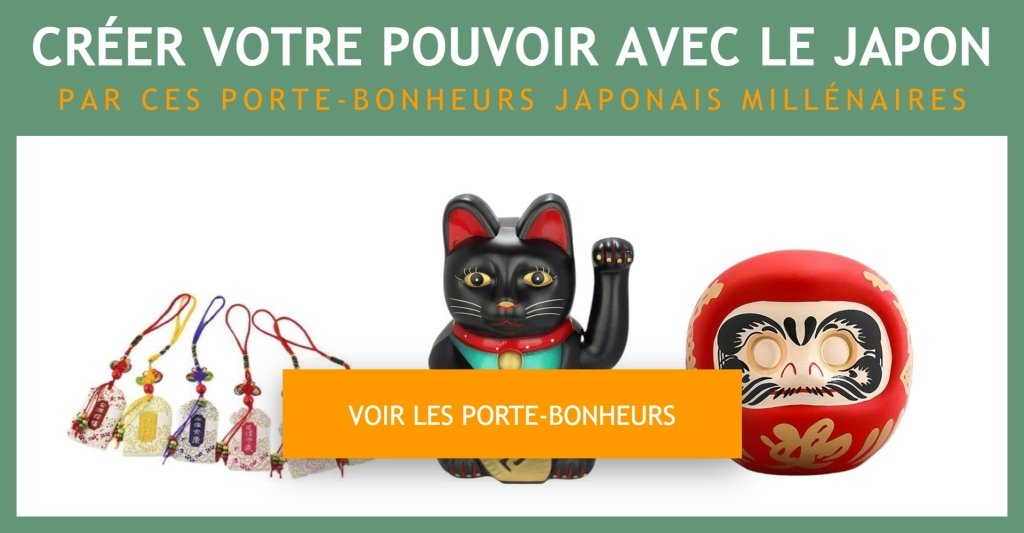The Japanese Oni: Demons of Japanese Folklore
For centuries, Japanese oni have protected the Japanese archipelago.
A form of protective and benevolent deity, onis are deeply rooted in Japanese culture and can be invoked to provide protection and spiritual guidance.
In this article, we will look in more detail at the role of oni and how they can help guide your path to a better future.
Contents :

What are Japanese onis?
Japanese onis are mythical creatures described in various tales and legends.
These mischievous, sometimes frightening beings can take on different aspects depending on their shape and attributes. They are usually depicted as two-headed monsters with long tails, hands covered with sharp claws and carrying a shield on their chest.
In Japanese culture, oni are often considered malevolent spirits who seek to harm humans by sowing discord and chaos around them.
They are not part of the Shinto pantheon, but it is common to associate them with the Indian god Pavana, whose goal was to dominate the entire world with his brute strength and superior intelligence.
In some versions of Japanese literature, the oni appear alongside good divine characters in order to fight together what threatens humanity: dark forces such as dragons or even evil demons.
Demons in Buddhism
Buddhism is an ancient religion dating back over 2500 years. This spiritual tradition teaches us that there are supernatural and benevolent beings, but also evil entities known as “demons”.
These can influence our destiny, which can lead to positive or negative consequences on our lives. While demons are an integral part of the Buddhist religious pantheon, they are not always seen as a threat.
In fact, popular beliefs associating demons with the idea of Evil are rarely found in Buddhism. Instead, spirits are seen as natural forces capable of aiding and guiding those seeking greater balance and personal spiritual fulfillment. They offer practitioners the opportunity to grow and progress on the path to Enlightenment through the teaching they provide to humans during dreams or mystical experiences.

Demons in Japanese Shinto
Demons are an integral part of Japanese Shinto, a religion that also dates back thousands of years.
Shinto beliefs are very varied and include myths and legends about kami (spirits) and tokai (demons). These supernatural beings have been represented in different ways over the centuries, but it can be said that they have always had an important role in Shinto.
According to Shinto tradition, there are several types of demons: some are good and protect humans while others are malevolent and seek to harm humans.
Some may even prove to be unexpected allies to those who know how to harness their power. We find, for example, protective demons called Kijimuna or even sea monsters like the Umibozu.
Shinto is also rich in rituals intended to appease or ward off malevolent spirits; for example, some people use prayer to summon a demon to do good around them.

Onis masks
Onis masks are traditional representations of Japanese folklore. They have been used for thousands of years as a symbol of power, strength and courage.
Oni are often described as malevolent beings who live in the mountains or seas, but they can also be seen as benevolent protectors. Their masks can therefore sometimes serve as a good luck charm.
Oni masks are distinguished by a large number of distinctive characteristics: intense red color, hooked noses, pointed horns and shaggy hair.
Additionally, each Oni is associated with a specific quality: justice for some; malice to others; protection against certain dark forces... These different characteristics therefore necessarily influence the appearance of the masks!
Note here that due to the strong cultural attachment to ancestral Japanese traditions linked to onis, these masks still find their place today on stage at the No and Raku theater (puppet theater).
Japanese holidays linked to onis
Japanese festivals linked to onis will most of the time be several centuries old.
The religious practices associated with this holiday vary from one region of Japan to another. In some parts of the country, it is common for people to gather around a fire to listen to stories about demons or to participate in traditional games such as Kabuki or Pyogene (a type of comic theater).
During festivals, offerings made to onis often include fresh fruit, flowers and various symbolic items such as origami or paintings.
Most Japanese cities organize large processions every year during which participants wear costumes and masks representing different oni to pay homage to them and, who knows, to attract their protection!

Demons in manga
Demons are an integral part of the manga world and have been depicted in many popular titles.
In manga, demons are usually presented as creatures that possess supernatural or magical powers. They can also be associated with spirituality and the occult.
Many characters from Japanese manga are directly linked to dark forces, such as Lord En ma-Dai, a Shinto god who controls hell; Satan Lucifer, a fallen angel who is the master of all demons; or Samuel, a Judaic deity known for his cruel and destructive side.
These mythical figures often serve as the main antagonists for the heroes of the stories they accompany.

Japanese oni tattoos
Japanese oni tattoos are a traditional form of tattooing that dates back centuries.
They were used by samurai to show their bravery and loyalty, but also as a symbol of protection against malicious forces.
Most of the time, an oni tattoo will consist of a lot of different designs which include:
- Scary masks
- Pointed horns
- Piercing red eyes
- A drooling mouth
- Long sharp claws
- And a whole bunch of other menacing features!
These designs are often colored with black, red and deep blue to give the images a lively and powerful appearance, with the color symbolizing the life force associated with the tattoo.
In any case, even today, Japanese onis tattoos are very popular, in particular because they reflect an unalterable will in the face of the difficulties encountered during our journey on Earth.
Lucky charm featured in this article

Japanese Oni Signet Ring
See more
Japanese Oni Necklace
See more


